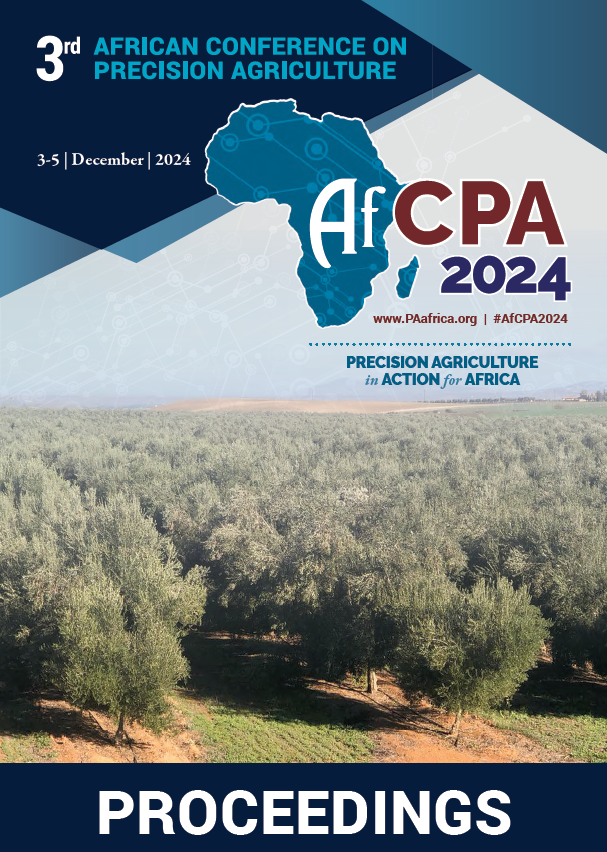Download the Conference Proceedings
Proceedings
Authors
| Filter results5 paper(s) found. |
|---|
1. Crop water requirements, biomass and grain yields estimation for Sulla (Hedysarum coronarium L.) using cropwat in semi-arid regions of TunisiaDwindling water resources and increasing food requirements require greater efficiency in water use, both in rainfed and in irrigated agriculture. Regulated deficit irrigation provides a means of reducing water consumption while minimizing adverse effects on yield. With the current water shortage in Africa improving crop water use is vital especially in the arid and semi-arid regions. Models can play a useful role in developing practical recommendations for optimizing crop production under... R. Hajri, M. Rezghui, M. Mechri, M. ben younes |
2. Assessment of Nitrogen and Phosphorus Content (NP) in Citrus Trees Using UAV-imagery Derived Vegetation Indices and Machine Learning AlgorithmsMonitoring nutrient status of citrus trees is fundamental to ensure optimum fruit yield and quality. However, this task is traditionally time-consuming and laborious. Unmanned Aerial Vehicles (UAVs), with their high temporal and spatial resolution imagery, are demonstrating a great potential to substitute traditional methods in assessing nutrient status of several crops, including citrus. In this study, we evaluated the performance of vegetation indices (VIs) derived from UAV multispectral images... Z. Abail, H. Benaouda, M. Chikhaoui, H. Benyahia, O. Iben halima, M. Baraka, A. Douaik, H. Iaaich, A. Zouahri, F. Omari |
3. Optimizing Water Use Efficiency in Flood Irrigation Systems in UgandaThere is growing demand for water across different sectors of production. Yet the extent of water wastage to furnish inefficient irrigation systems especially in flood irrigated rice systems, is not known. In developing countries and in Uganda particularly, most irrigation scheduling in the irrigation schemes is based on rotational system rather than crop water needs. In Doho Rice Irrigation Scheme (DRIS) in eastern Uganda for example, farmers’ plots receive up to 50mm ponding of irrigation... P. Onen, E. Opolot, G. Olupot, G. Aguttu |
4. Soil Moisture Sensing for Increased Water Use Efficiency and Crop Yields in Furrow Irrigated Systems: a Case of Mubuku Irrigation Scheme in UgandaWater and nutrient use efficiencies remain low in most of the irrigated systems in developing countries, undermining crop productivity in these areas. This is partly due to lack of precise and site-specific information to guide irrigation scheduling. In most cases information on soil properties and crop water requirements is lacking and thus irrigation scheduling is done on rotational basis whether the crop needs water or not. Consequently, the amount of water stored in soil root zone for crop... E. Opolot, D. Besigye, P. Musinguzi, I.N. Alou, T.A. Basamba, G. Olupot |
5. A Synopsis of Water and Nutrient Requirements of Hass Avocado for Uganda and Sub-saharan Africa PractitionersHass avocado production is increasing in Uganda and sub-Saharan Africa (SSA) to tap into the lucrative market especially in Western Europe, China, Japan, and Russia. However, there is limited information about its water and nutrient requirements in end-user-friendly formats especially in Uganda and SSA. We consolidated the scanty information about water and nutrient requirements of Hass avocado and made necessary recalculations and unit conversions to aid meaningful uptake of the information by... P.C. Odong, G. Olupot, T.L. Odong, A. Mwije, P. Musinguzi, I.N. Alou, T.A. Basamba, P. Ebanyat, E. Opolot |
